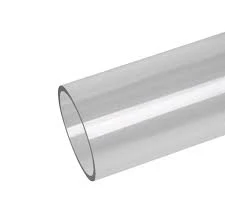12-р сар . 16, 2024 15:00 Back to list
Plastic Welding Rods for Strong and Durable Joints in Your Projects
The Role of Plastic Welding Rods in Modern Manufacturing
Plastic welding is a crucial process in various industries, providing durability and seamless joints in plastics. One of the key components of this process is the plastic welding rod, which plays an essential role in achieving strong and effective bonds in plastic materials. This article delves into the significance of plastic welding rods, their types, applications, and the advantages they offer in modern manufacturing.
Understanding Plastic Welding
Plastic welding is a process used to join thermoplastic materials by applying heat and pressure. Unlike traditional welding methods used for metals, plastic welding does not melt the base materials; instead, it softens them to create a strong joint upon cooling. Various techniques, such as hot air welding, extrusion welding, and vibration welding, are employed to achieve this task. The choice of method often depends on the specific requirements of the project, including the type of plastic being used, the joint design, and the desired strength of the bond.
What Are Plastic Welding Rods?
Plastic welding rods are cylindrical or flat materials made from thermoplastic polymers, designed specifically to be melted and fused with other plastic components. They serve as filler material during the welding process, bridging gaps between two pieces of plastic to create a solid joint. These rods are available in various types, each suited for different applications based on their material composition and thermal properties. Common materials used for plastic welding rods include polyethylene, polypropylene, polyvinyl chloride (PVC), and nylon, among others.
Types of Plastic Welding Rods
1. Polyethylene Welding Rods Lightweight and resistant to chemicals, these rods are commonly used in industries like water and wastewater management. They are ideal for joining HDPE (high-density polyethylene) materials.
2. Polypropylene Welding Rods Known for their excellent impact resistance and low density, polypropylene rods are often used in automotive and industrial applications.
3. PVC Welding Rods These rods are used in plumbing and construction industries, particularly for joining PVC pipes and fittings due to their weather resistance and easy availability.
4. Nylon Welding Rods With high strength and flexibility, nylon rods are used in applications where durability and resilience to wear are essential, such as in machinery parts and automotive components.
Applications of Plastic Welding Rods
Plastic welding rods find applications across a wide range of industries, including
plastic welding rod

- Manufacturing In producing various plastic products, such as tanks, pipes, and tools, where strength and reliability are paramount.
- Automotive For repairing and joining components of vehicles, ensuring that they withstand harsh conditions.
- Construction In plumbing and electrical sectors, welding rods are used to create seamless joints in pipelines and conduit systems
.- Marine and Aerospace Plastic welding rods are essential for constructing lightweight yet durable structures in environments where weight and resistance to corrosion are critical.
Advantages of Using Plastic Welding Rods
The use of plastic welding rods offers several benefits
1. Strength and Durability Joints created with plastic welding rods are often stronger than the base materials themselves, enhancing the longevity of the final product.
2. Cost-Effectiveness Welding rods allow for the reuse and repair of plastic structures, significantly reducing waste and saving on material costs.
3. Versatility With various types of welding rods available, manufacturers can tailor their welding processes to accommodate different materials and requirements.
4. Efficiency Plastic welding processes can often be completed quickly, allowing for faster production times and reduced downtime for repairs.
Conclusion
Plastic welding rods are indispensable in modern manufacturing, providing the means to create strong, reliable joints in a myriad of applications. As industries continue to evolve and the demand for durable plastic products increases, the importance of understanding and utilizing these rods cannot be overstated. From automotive to aerospace, the versatility and effectiveness of plastic welding rods will ensure they remain a key player in the fabrication and repair of plastic materials in the years to come.
-
High-Quality PPR Pipes and Fittings Durable ERA PPR & PVC PPR Solutions
NewsJul.08,2025
-
Black HDPE Cutting Board - Durable, Non-Porous & Food Safe HDPE Plastic Cutting Board
NewsJul.08,2025
-
High-Quality CPVC Panel Durable HDPE & PVC Panels Supplier
NewsJul.08,2025
-
Double PE Welding Rod Supplier - High Strength, Durable & Versatile Welding Solutions
NewsJul.07,2025
-
High-Quality PVC-O Pipe Supplier Durable 75mm PVC Pipe & Connections Leading PVC Pipe Company
NewsJul.07,2025
-
HDPE Drainage Pipe Supplier – Durable & Corrosion-Resistant Solutions
NewsJul.06,2025

